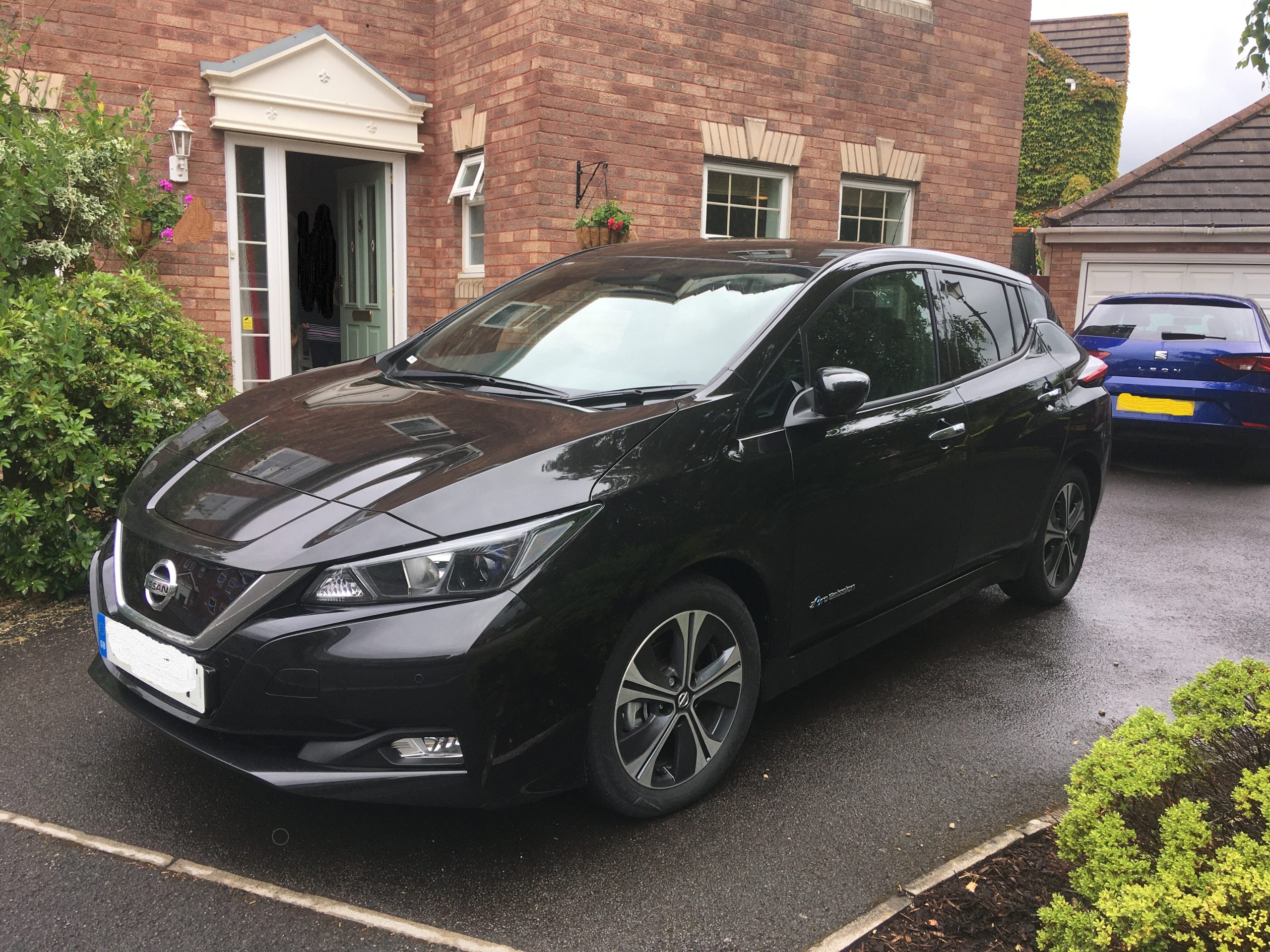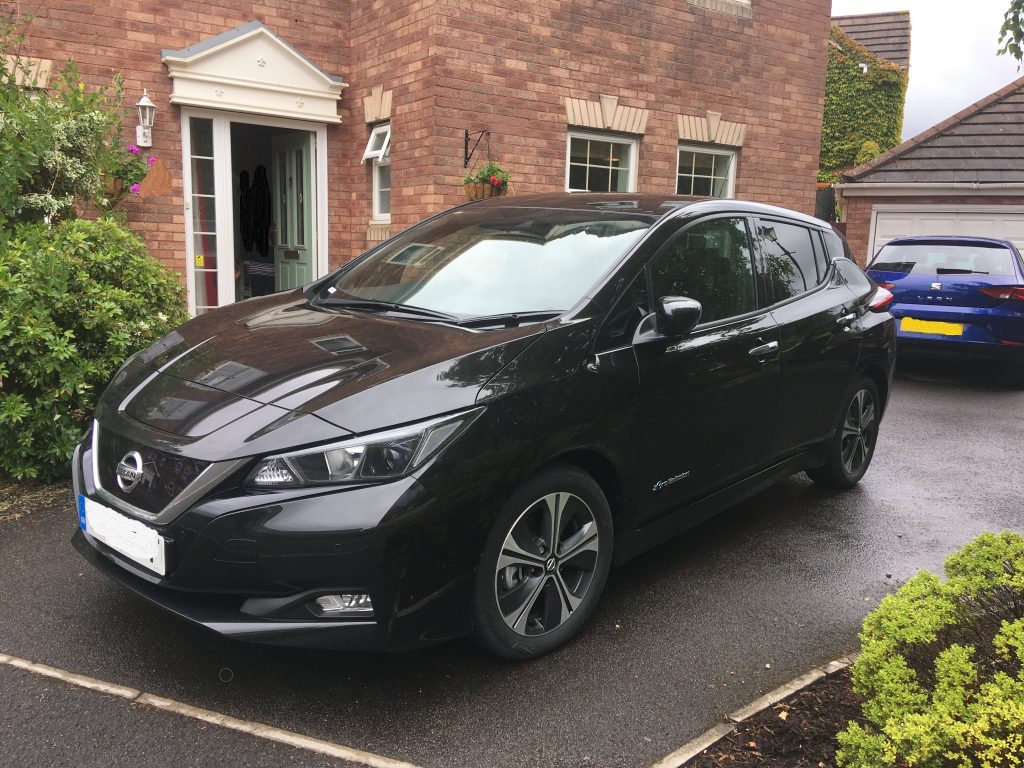
12 Jun Another ICE bites the dust
It’s an exciting day for RenewEV as the new Nissan Leaf NConnecta joins the team. After a long “lockdown” delay the day has finally come and it means another dent is made in our company’s carbon footprint.

Why did we go electric?
The simple answer is carbon footprint. A recent Carbon Brief report underlined the rationale for choosing a new electric car instead of going for a second hand or new diesel or unleaded car. Some might ask about Hydrogen, did we think of that? In truth, for only the flashest of flashes, but we feel more convinced with the stronger arguments for hydrogen as a storage medium or a long distance haulage and passenger travel option than a short to medium distance tactical vehicle we needed for survey visits.
For our line of work we visit sites, which are off rail and bus routes and at distances longer than a bike and it feels like the right choice for those journeys. Its also a handy family car for outside working hours.
How do we feel about getting a car at all?
We already use bicycle and train a lot and share cars pretty often, but when we calculated our journeys and pattern of use there was still a big gap we couldn’t avoid and so the end result is a fair balance.
How did we work it all out?
If we broke it down into steps it would be something like:
- Calculate the weekly mileage for a year – we had expenses records so that was simple so we could see potential for a 9,000-12,000 mileage per year with business and family use combined (that’s after bike and train journeys removed)
- Look at some cars to find the right model for the types of uses we needed it for – site surveys, family travel etc.
- Get quotes for electric cars, to purchase to lease and second hand
- Look up reviews of all those options and all those car types and check the spec of the cars for mileage range, battery size, availability of stock, maintenance
- Get a quote for some charge points, we looked at EO, Podpoint, Zappi, Swarco E Next and E Home, Alfen and asked installers to give a quote. There is still a grant for home and business charge points and some installers are getting quite slick at organising charge point residential installs which bodes well for bringing the costs down over time.
- Look up green electricity tariffs which provide a time of use tariff which offers cheaper car charging times – We looked at Octopus Go and a couple of the Big 6.
- Look up miles per gallon for the ICE cars for both old and new, it can be up to 25p/mile or more for some cars
- Work out miles per charge from manufacturer data, useful on-line sources such as Go Ultra Low and Zap Map were really useful (see links below)
- Talk to electric car drivers – fortunately John owned an E Golf and shared car journeys were a great learning experience
- Do the numbers, put all the costs in, put in sensible estimates for miles per charge, planned annual mileage and costs of electricity and then pour cold water on it a bit more and you get an argument which says do this if the mileage, driving style, pattern of use and tariff rates stack up – which they did, giving a marginal cost benefit versus running an ICE car MINUS the carbon 😊
So, what did we get in the end?
Nissan Leaf NConnecta, on a 2-year lease with a plan to hand this over to another Director in a year and replace another ICE car at home next year. We could have ordered a Tesla Model 3, it would have cost double the price and for not that much extra benefit when the main driver is not that much of a car fanatic. We could have ordered another E Golf but again the cost was higher than the Leaf for not that much more appeal to the main driver. One of our team has an E Golf and loves it for many good reasons.
Why not second hand?
Mileage and battery size are linked and the technology has advanced in the last few years, so it felt like a good call to go for a new car with a bigger battery this time. There are some good second-hand providers now though and friends have got them so would not rule it out if you are on a tight budget with different driving requirements to ours.
Why lease?
Partly financial as we are a new start-up company, but we could have obtained a loan to purchase. Given the potential mileage and the depreciation hit it might take it felt like a lease was the better option this time and at a time when there is much to be learnt about these cars before getting in too deep or too costly or too early. Willow Leasing did a good deal which was marginally better than others on price and were pretty helpful throughout.
Which Charge point?
The charge point we chose is due to be installed in about a week (its a 3 pin cable and plug for now which to be honest is pretty handy for get out of jail when you are on the road and staying somewhere with no charge point). The EO chargepoint we chose is like other smart chargers offers forms of connectivity and flexibility services. We did look at quite a few charge points and most of the brands we looked at were great.
Did we get a green EV tariff?
We also managed to get Octopus Go tariff which gives you a 5p rate between 12.30am and 4.30am and helps you get the price of charging. When the charge point turns up we will be able to schedule charging but for now its 3 pin plug from a cable in the boot which takes longer to charge and to be honest we are plugging it in when it’s sunny or late night as we want to use the grid at its lowest carbon intensity where we can when the wind and sun are blowing and shining (even though we have a green tariff it feels like the right thing to do and we should all do it and the National Grid has a cool app for checking that – see link below).
On a slightly less glamorous topic than tariffs and charge points, insurance was pretty much the same deal as your normal car, the car handover was pretty easy and normal and the only real worry on the day was whether I would accidentally floor it and crash it the first time out, as electric cars are famously nippy.
How it feels
- Every morning I can wake up with a full tank
- My fuel is no longer from a petrol station expect in an absolute emergency
- My fuel is 100% green
- 2.62 tonnes of carbon a year versus the unleaded petrol car we used to drive feels nice
- I can participate more in giving the national grid flexibility to take on more renewable energy, thus helping the energy transition and tackling climate emergency
- Do I worry about range anxiety? No, because I did my homework and have Apps like Zap Map to plan my journeys and to be quite honest I don’t do many long distance journeys and anyway who doesn’t stop for lunch on long trips? Re-charging had another meaning and a time and a place even then.
- There more to learn like which Apps to get to buy fuel no long journeys, but that’s for tomorrow and I will write about that at some point as well if people want to know more
Helpful links
https://www.carbonbrief.org/factcheck-how-electric-vehicles-help-to-tackle-climate-change https://www.goultralow.com/
https://www.nationalgrid.com/app-helps-you-work-out-how-green-your-power
June 2020. Alex Lockton.

Peter Rawlins
Posted at 12:59h, 17 JuneMakes sense